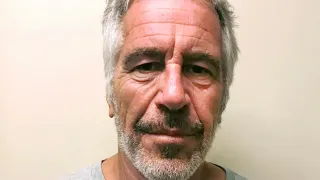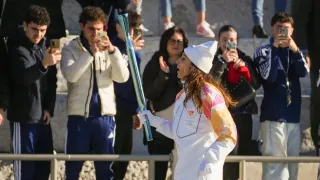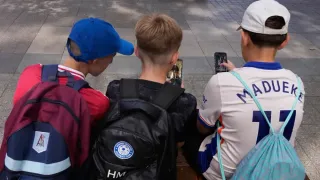March 12, 2014
Last Call: The Health Overhaul's March 31 Deadline
Michael Cox READ TIME: 6 MIN.
The San Francisco Police Department’s Mission Station has a new captain in Sean Perdomo.
The department made the announcement via Facebook and Instagram July 17, and he started earlier this week, according to SFPD Captain Christopher Del Gandio, the first out gay SFPD captain and the co-chairperson of the SFPD LGBTQ+ Forum. The forum members learned of Perdomo’s promotion at their meeting July 30 at UCSF Mission Bay.
A department spokesperson confirmed the news late July 30, but as of press time July 31 hasn’t returned an email seeking additional information. The website for Mission Station already has been updated to reflect Perdomo being named its captain as well as of the Field Operations Bureau, Mid-City Division. It includes a note that his “Biography coming soon!”
On another issue, forum members had not heard about recent incidents of men being allegedly drugged by two women and then discovered to be missing thousands of dollars. One incident took place after a gay man met the women while at the Mix bar in the Castro.
The forum also heard from a gay 911 operator.
Mission Station
As the B.A.R. previously reported, Captain Liza Johansen departed the role earlier this summer after less than a year, making her the fifth Mission Station captain in four years responsible for the station, which covers much of San Francisco’s LGBTQ Castro neighborhood.
A KPIX-TV report from February 2024 stated that Perdomo had been assisting with training a large new class of officers at the police academy. He formally was captain of the Police Academy and is a former treasurer of the San Francisco Police Officers Association.
Two years ago, Perdomo was involved in the department’s creating guidance on police foot chases. As he told the city’s Police Commission, “Something that you learn, as you become a more senior officer, is weighing the costs and benefits of chasing after somebody.”
A 2017 report in the San Francisco Examiner called him a “top scorer” in the officer exam. It stated he was “A sergeant with a record of aggressive policing, according to news reports and department sources. For instance, a man was acquitted in a case that involved Perdomo tackling him and falsely identifying him as a suspect in a drug-dealing case. But Perdomo is also known for putting away a man who was posing as a police officer and sexually assaulting Latino men.”
Between Johansen’s tenure and Perdomo’s start on the job, Mission Station was led temporarily by Manny Bonilla, who spoke at a July 10 public safety forum in the Castro. That meeting garnered headlines after SFPD Deputy Chief Derrick Lew made comments about officers protecting federal immigration enforcement. Those remarks rankled queer District 9 Supervisor Jackie Fielder, who sent a letter of inquiry seeking information from the department about its policies. She later gathered the support of enough city supervisors to pass a nonbinding resolution asking the department to come up with policies about interacting with ICE.
Del Gandio said during the forum that the SFPD doesn’t cooperate with ICE, due to the city’s current sanctuary ordinance.
Ron Davis, a gay man who works at the Department of Emergency Management, where he answers 911 calls, encouraged anyone no matter their immigration status who feels they need emergency services to call 911.
“If you’re the victim of a crime, a heinous crime, we’re not going to report you to immigration,” he said. “My department has no contact with immigration on a regular basis. … I get a lot of calls for people who are calling for an undocumented person because they are afraid to call. Please let them know this is a sanctuary city as far as police are concerned. We offer no judgment. It’s not our place.”
On the subject of captain turnover at district stations, District 5 Supervisor Bilal Mahmood, a straight ally, recently sent a letter of inquiry to the SFPD to try to ascertain how frequently captains are rotated out of precincts. In District 5, covering the Tenderloin and Haight Ashbury neighborhoods, five captains were lost across three stations this year alone, according to Mahmood’s letter.
Specifically, it inquires, “Over the past five years, how often have captains been reassigned or replaced at each SFPD district station?” as well as “Does the Department track the reasons for captain turnover in a centralized or formal way? Are exit interviews conducted? If so, can this data be shared?” and “Are there any strategies or incentives currently in place to promote longer captain tenures at a single station?”
An SFPD spokesperson hasn’t returned the B.A.R.’s requests for comment about either letter.
Del Gandio said that one way the department is trying to promote consistent communication between the police stations and the communities they serve, in spite of turnover, is by establishing new liaisons. As the San Francisco Chronicle reported, Lieutenant Christina Serrano will be a liaison to the Spanish-speaking community out of Mission Station, and Lieutenant Kin Lee will be a liaison to the Cantonese-speaking community out of Central Station, covering Chinatown.
“I think Mission and Central are the busiest when it comes to events and community meetings, and what have you,” Del Gandio said. “As you can see, Mission Station goes through captains pretty quickly, because there’s so much demand. … Captains get promoted out of those stations, they’re there for a year then they are promoted to command staff, and that’s one of the basic complaints of residents. This will provide a little continuity – the captain may have gotten promoted, but the lieutenant is still here.”
Del Gandio confirmed that the SFPD LGBTQ+ Forum will continue to meet even as the department does not have a permanent chief; Paul Yep is interim chief following the departure of longtime chief Willaim Scott in June.
Alleged drugging incidents
Del Gandio and other forum members, who are civilians, had not heard of two recent reported cases of women allegedly drugging men they met at San Francisco bars with what they said was cocaine before stealing thousands of dollars.
The first case was reported by a gay man who said he met the women at The Mix, and the second case was reported by a straight man who said he met the women at a North Beach bar.
Greg Carey, a gay man who is chair of Castro Community on Patrol, said that when the volunteer neighborhood safety group started, druggings were “kind of common.”
“That was happening in bars where younger people were roofie-ing older men and when they were suddenly feeling ill, they’d volunteer to help them get home safely, then they’d rob them,” Carey said. “One of the reasons we had 100 volunteers at one point.”
Carey and Ken Craig, also of Castro patrol, said that the forum – which meets four times a year – is looking for new members, particularly from trans and women communities, and neighborhoods other than the Castro.
“If there’s anyone you know out in the community who might make a good fit, especially more diverse communities, more female, we encourage them to apply” to join, he said. The forum can be reached at the email address [email protected] .
911 operator discusses emergency calls
Davis, the 911 operator, was the featured speaker at the forum.
San Francisco’s 911 system incorporates calls that are then sent to the appropriate city department – whether that be police, sheriff, fire, medical, or the street crisis response teams, Davis said. When a call is sent to police, the call is sent to one of five “talking groups,” which are comprised of two dispatchers each.
Davis said the city’s 911 system has become ever more strained.
“When I started in 2001 we only did police – we did, on average, 1,500 calls a day, and we weren’t doing cell calls,” he said. “We had 115 people. I know because I was two from the bottom of the sign-up sheet [for shifts.] … The current sign up, we have 114 people on it, and we do anywhere from between 3,500 to 4,000 calls a day. On weekends, it goes above 4,000. We do police, fire, medical, and sheriff, and we take those calls and you mix in the difficulty of triaging medical calls, which is longer, so even if there’s less calls you’d be adding volume to the time it takes to phone in a call.”
Davis said that, “Mayor [Daniel] Lurie seems to have put a priority on seeing” more callers are hired, “but it’s a hard job and people burn out quickly.” Davis has worked 25 years in San Francisco.
He praised the street crisis response teams, saying it has helped lessen the burden on the police and other departments.
“At first we thought it was a bunch of nonsense, but it actually works,” he said. “I hope they keep expanding it.”
Calls have to meet certain requirements to be routed to street crisis response.
“You see a person on the street and think they need service? Did you ask? Did he say [he wanted service]? Is he in any way in distress?” Davis asked, giving questions 911 operators will want to know. “If you see a person down, did you just see him over there?”
He said when “life status is questionable,” the paramedics are called.
“Street crisis response is a godsend for us,” he said.






